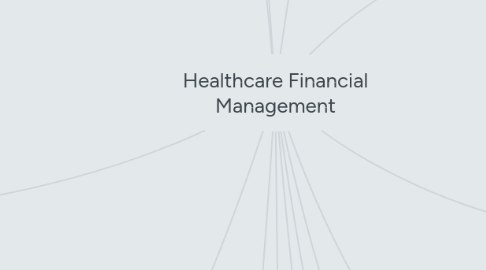
1. important issues facing healthcare managers today
1.1. Develop a long-term business plan for physician integration
1.2. Implement substantial and sustainable cost-containment strategies
1.3. Modify strategic and capital plans to account for potential shifts in revenue
1.4. Redesign care processes and delivery systems to better integrate professional and facility components of care
2. four forms of business organization
2.1. (1) Proprietorship
2.2. (2) Partnership
2.3. (3) Corporation:
2.3.1. Investor-owned
2.3.1.1. Individuals (well defended) buy the shares (either of publicly held firms or privately held) to obtain ownership (means they get stock-/shareholders).
2.3.1.2. They are taxed, and residual earnings belong to stock-/shareholders (IBM).
2.3.1.3. They have a different main goal in maximization: shareholder wealth maximization
2.3.1.4. Financial goals are both the same: staying profitable
2.3.2. Not-for-profit
2.3.2.1. For beneficial activities and purpose, tax exempt and do not have shareholder, but rather, a board of trusties (supporter).
2.3.2.2. Main Goal: Follow and achieve mission statement/business principles (beneficial activities)
2.3.2.3. Financial goals are both the same: staying profitable
2.3.2.4. pressures on not-for-profit hospitals to ensure that they meet their charitable mission
2.3.3. all not-for-profit entities are organized as corporations
2.4. (4) Hybrid
3. holding company
3.1. no business operations, activities or other active deals. Instead, the holding company owns assets
3.2. Advantages: tax benefits and savings, opportunities for income sharing and asset protection
3.3. Disadavantages: Partial multiple taxation, Ease of forced divestiture.
4. Organizantional Goals
4.1. investor owned
4.1.1. shareholder wealth maximization, operated for the exclusive benefit of the owners
4.1.2. Agency problem
4.1.2.1. information asymmetry bewtween principle and agent
4.1.2.2. factors to improve agency problem used by stockholders managers
4.1.2.2.1. The creation of managerial incentives
4.1.2.2.2. Threat of firing
4.1.2.2.3. The danger of a takeover
4.2. not-for profit firms
4.2.1. health services organizations develop a framework for financial decision making
5. Sources:
5.1. Gapensk, L. C. (2011). INTRODUCTION TO HEALTHCARE FINANCIAL MANAGEMENT. In Healthcare Finance, Health Administration Press, 5th ed. (pp. 3-40).
5.2. Ärztekammer, Ö. (2018, 10 4). aerztekammer.at. Retrieved from http://www.aerztekammer.at/aufgaben-der-oesterreichischen-aerztekammer
6. financial management in today’s health services
6.1. evaluate and plan, make long-term treatment decisions, finance decisions, working on capital management, manage contracts and have to manage risk.
6.2. to meet the needs of people and their health problems and utilize financials (funds) to maximize the efficiency and value of society’s health
7. this role changed over time
7.1. New strategies needed due to globalization, techniqual development and demographic change
7.2. change the priorities: less bureaucratic and more focus on the maximum value to society
7.3. important to restrict costs, support managed care and promote other payer contract negotiations
8. horizontal and vertical integration
8.1. Horizontal: looking for a similar company in the same industry (facebook took instagram), combining hospitals
8.2. seeking to acquire a company that operates in the production process of the same industry, before or after it in the supply chain process (Ikea's 2015 purchase of forests in Romania to supply its own raw materials), one single organizations offers a wide range of care
8.3. Integration benefit: to offer a full line of coordinated services and hence to increase the overall effectiveness and lower the overall cost of the services provided.
8.4. integrated delivery systems
8.4.1. single or multiplee owners
8.4.2. joint together by contracts and agreements
8.4.3. coordination --> increase effectiveness --> lower costs
8.4.4. formed by managed care plans and by providers to facilitate contracting with plans or employers
8.4.5. requires: higher level of administrative and clinical integration, managers of the system’s individual elements place their own interests second to those of the overall system, a management information system that seamlessly passes managerial and patient data among all of the components
9. difference in individual tax treatment between interest and dividend income
9.1. interest income:Taxes are progressive
9.2. dividend income: Taxes are lower because income get paid out from taxed earnings
10. capital gains and losses
10.1. ASSET sale of company shares
10.1.1. short-term capital gains taxed as ordinary income same rates as wages and interest
10.1.2. long-term capital gains taxed same as dividends, lower than on ordinary income
